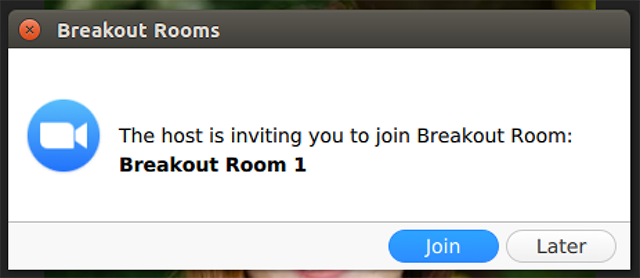How to “Fix” Breakout Rooms
Zoom “breakout rooms” allow participants to meet in a more intimate environment, but also create awkward situations.
Breakout rooms. Let me get this straight, I have to go into a virtual conversation with random students, some of whom I’ve never met before, let alone even seen, and somehow connect, share, and discuss ideas with them? And on top of that, I have to go off mute? Absolutely not.
Now that Zoom classes are the new norm, teachers need to find different ways to get their students to interact with each other, all while being online. Breakout rooms seemed like the perfect solution: teachers can separate students into small groups for them to work together on the assignment, just like they would do in the classroom. You can even customize these rooms to include specific students, or keep it completely randomized. So what’s the issue?
The expectation of students conversing with each other over the computer is unattainable, unless they’re with their friends or people they are comfortable around, and personally, I even get awkward around those people sometimes. Breakout rooms are difficult to regulate and most kids don’t even acknowledge the fact that they should be discussing something, they usually just sit in silence. Even when you do engage in conversation, it’s usually awkward or confusing, or both. According to Shannon Strunk ‘22, “breakout rooms are a waste of time because most of the time you’re sitting there in silence and everyone turns their cameras off.” Strunk makes a valid point; from my experience, other students will turn off their cameras and you’ll end up just sitting and waiting until the teacher calls you back to the main room. Even when teachers do check in on you occasionally, after they leave everyone becomes silent again, and it’s almost even more awkward than before. Alexia Crawford ‘22 said “they’re awkward and people rarely talk unless they have friends in their room.” This awkwardness makes it more difficult to complete an assignment, and if it was up to me, I’d rather do it alone.
On the other hand, breakout rooms are somewhat manageable when you’re with the same students every time, similar to if you were sitting at a table in the classroom — you would be discussing and working with familiar faces. This allows me, at least, to establish a connection and acquaintanceship with the same people, making it more and more comfortable each time I’m in a breakout room with them. Throwing students into breakout rooms with people they don’t know or aren’t familiar with is the equivalent of putting them on the spot in class, leading to very awkward outcomes. So what’s a good solution?
Keeping the same group of students together every time offers some comfort and stability to online schooling. My AP Language class does this and I find myself being even more productive than I would be with a randomized group. Another solution would be picking your breakout room group, which teachers could establish at the beginning of the quarter or unit, so if they needed to separate students into small groups quickly, they’d already be ready to go. Strunk experienced this in her Ethics class with Dr. Bundang, explaining that “we got to sign up for breakout rooms which was nice because I felt comfortable with my group and I knew everyone in it so we got more done.” Although there is no perfect way to simulate group discussions to be like in-person school, adjusting breakout rooms to be less awkward would greatly help students, and therefore, teachers.
Teachers are definitely trying to accommodate the needs of all students, but they may not realize how awkward and unproductive most of us think breakout rooms are. Overall, if both students and teachers put in the effort to change breakout rooms, it would be so much better for the long run. Since we don’t really know when in-person school will be happening again, these changes should be made as soon as possible, which would benefit everyone.







Lisa Palmer • Nov 2, 2020 at 10:36 pm
Thank you for sharing your research and explaining so clearly why break-out rooms often fail as a substitute for in-class small group discussions. I’m a professor, and I found your insights very helpful. Next time I’ll use the same groups all semester.